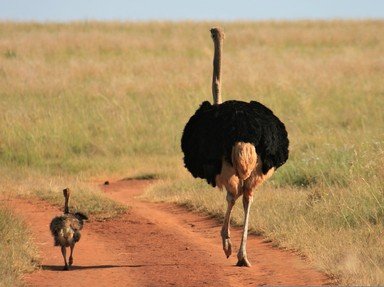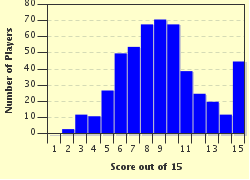Quiz Answer Key and Fun Facts
1. Caribou and reindeer are the same animal: Rangifer tarandus. Their offspring are sometimes referred to as calves. By what other term are the babies also known?
2. What is a pullet?
3. The offspring of a peacock and a peahen is called what?
4. The recipe for a witches' brew in Shakespeare's "Macbeth" includes "eye of newt, and toe of frog." A newt is a kind of aquatic salamander. What are its young called, once they metamorphose through their aquatic larval stage?
5. When a goose and a gander have a baby, what is it called?
6. Mister and Missus Aardvark bring out their youngest from their burrow to show the world their new __________.
7. What are baby or infant lemurs called?
8. Young oxen are often called calves. By what other name are they also known, especially in parts of Great Britain?
9. The young of a rabbit may be known as a bunny, a kit, a kitten or a nestling. Hares are not rabbits. What is the young of a hare known as?
10. The female seahorse deposits her eggs into a pouch in the male seahorse where they gestate and from which they are live born. As many as 2500 tiny seahorses may emerge from the male's egg pouch. What is the term for a baby seahorse?
11. An alpaca is like a llama only smaller. This native of South America exists only as a domesticated animal; there are no wild alpacas. These gentle creatures are raised primarily for their fleece. What is the correct name for a baby alpaca?
12. Meerkats are members of the same family as the mongoose. Meerkat mothers produce one to five young at a time, usually three. What are these offspring called?
13. Scientific arguments notwithstanding, the American buffalo and the American bison are the same animal. These grassland giants produce a single offspring annually. What are their children called?
14. Although shrews are not rodents, they look rather like a cross between a mouse and a mole. They are tiny creatures and their babies tinier still. What are shrew babies called?
15. Chimp is a shortened form of the word chimpanzee but it is not the term used to described chimpanzee young. What is the correct term?
Source: Author
FatherSteve
This quiz was reviewed by FunTrivia editor
Tizzabelle before going online.
Any errors found in FunTrivia content are routinely corrected through our feedback system.


